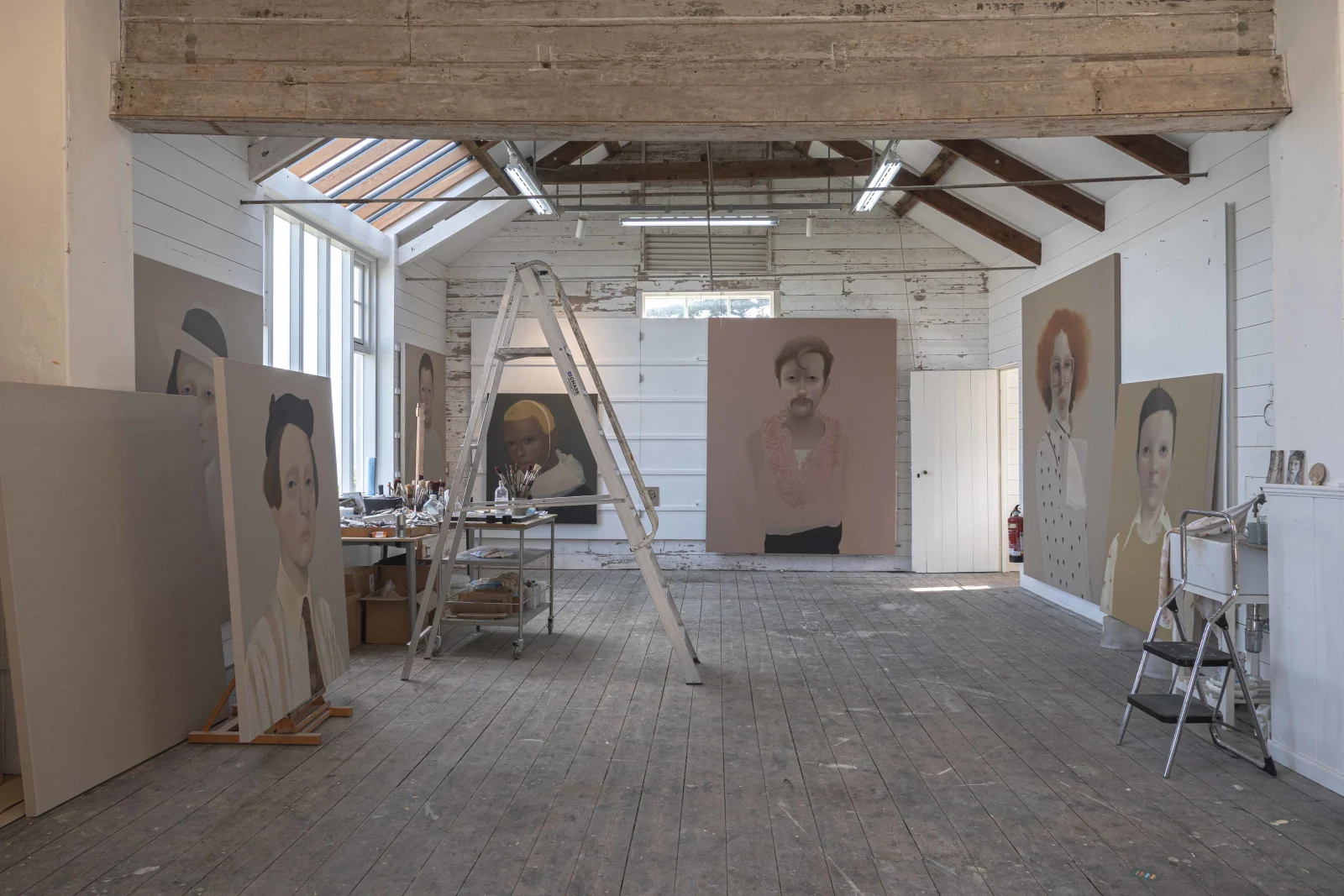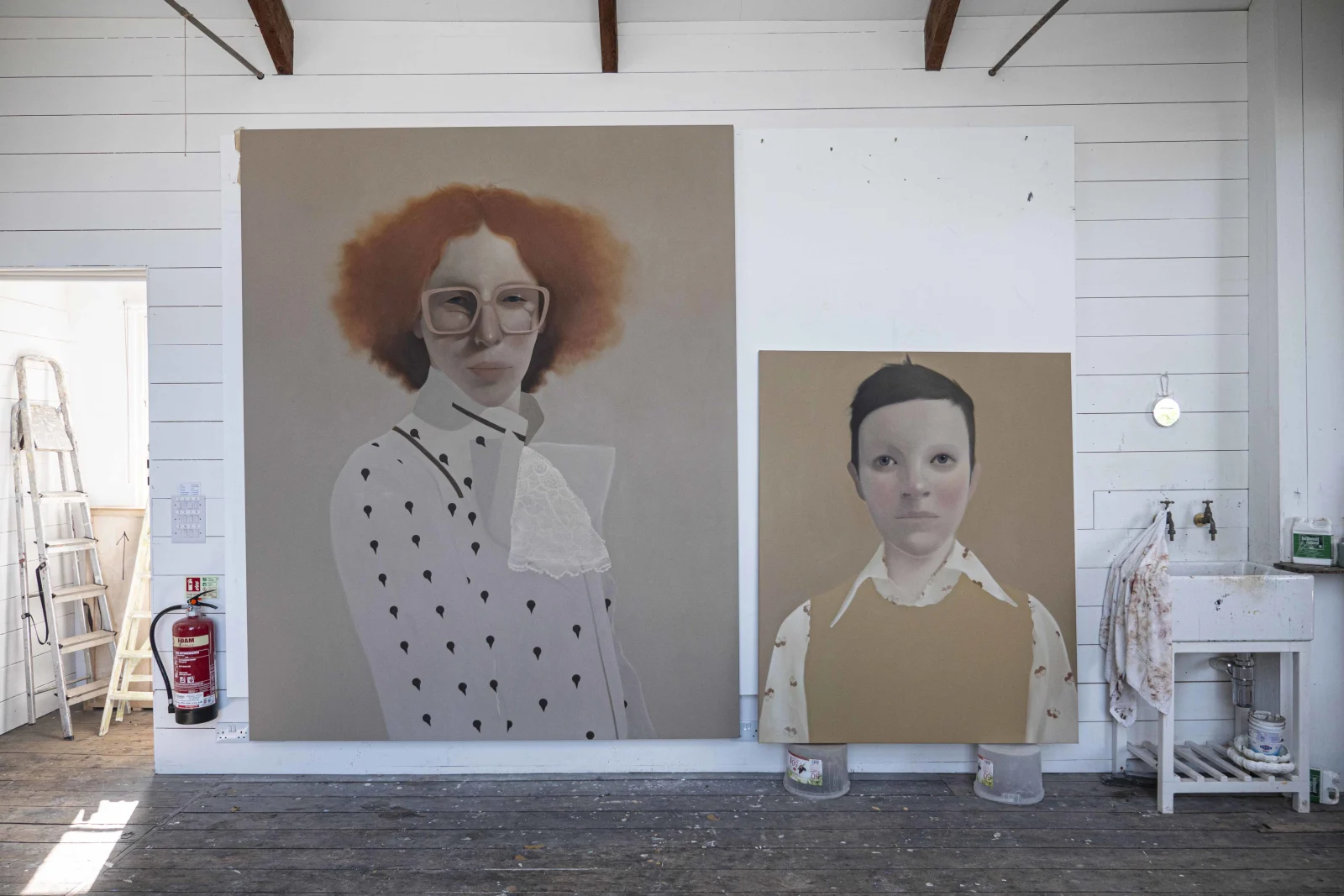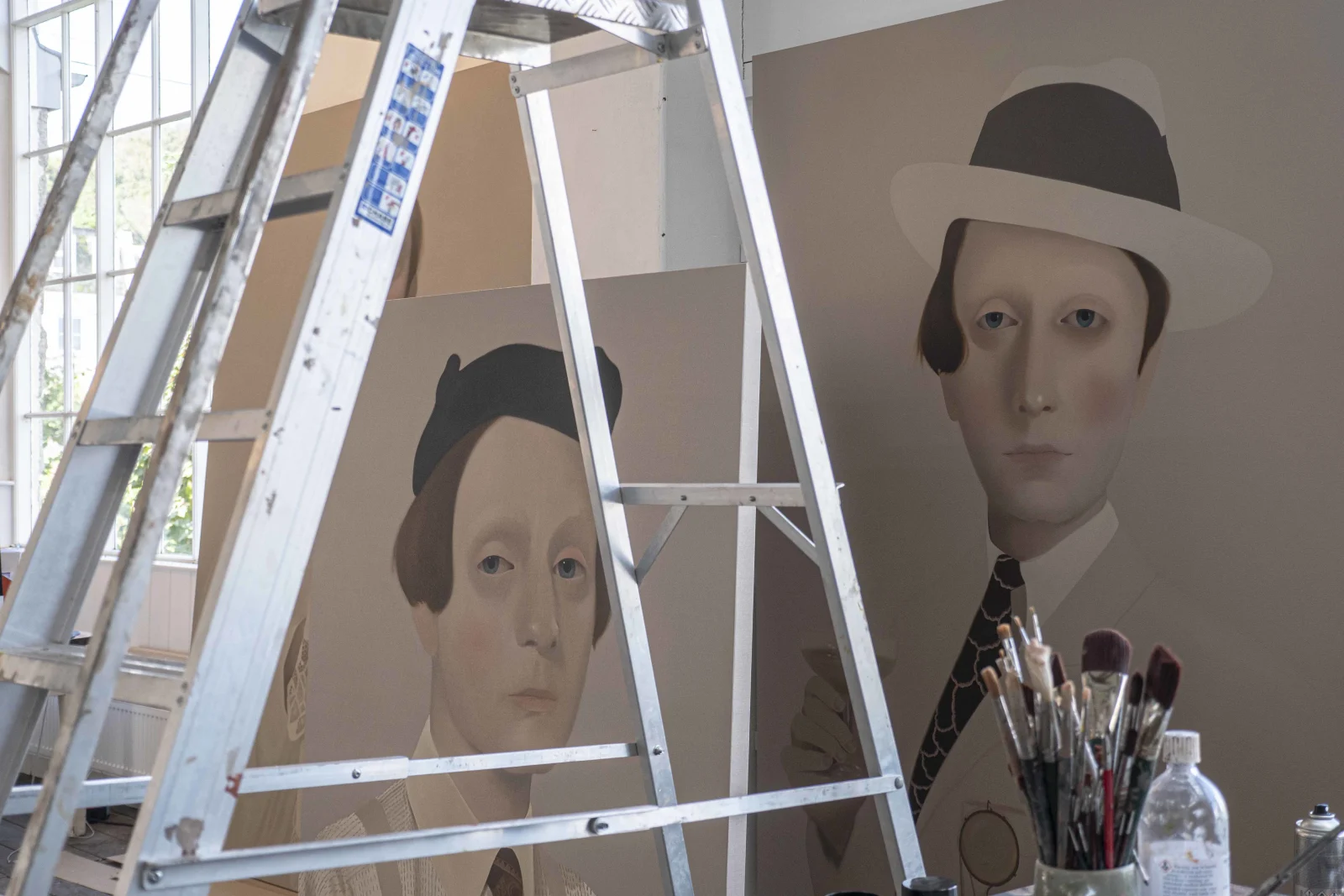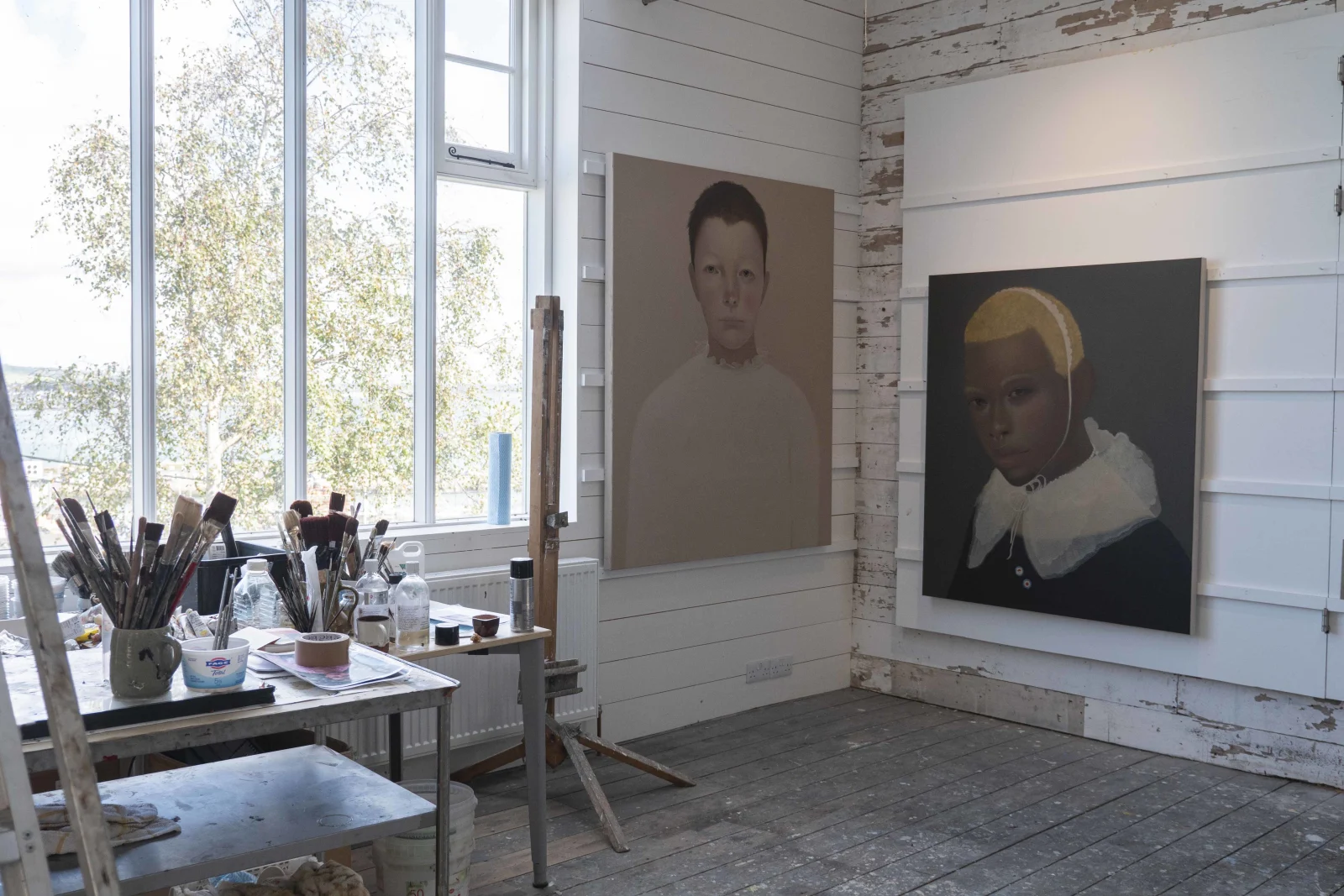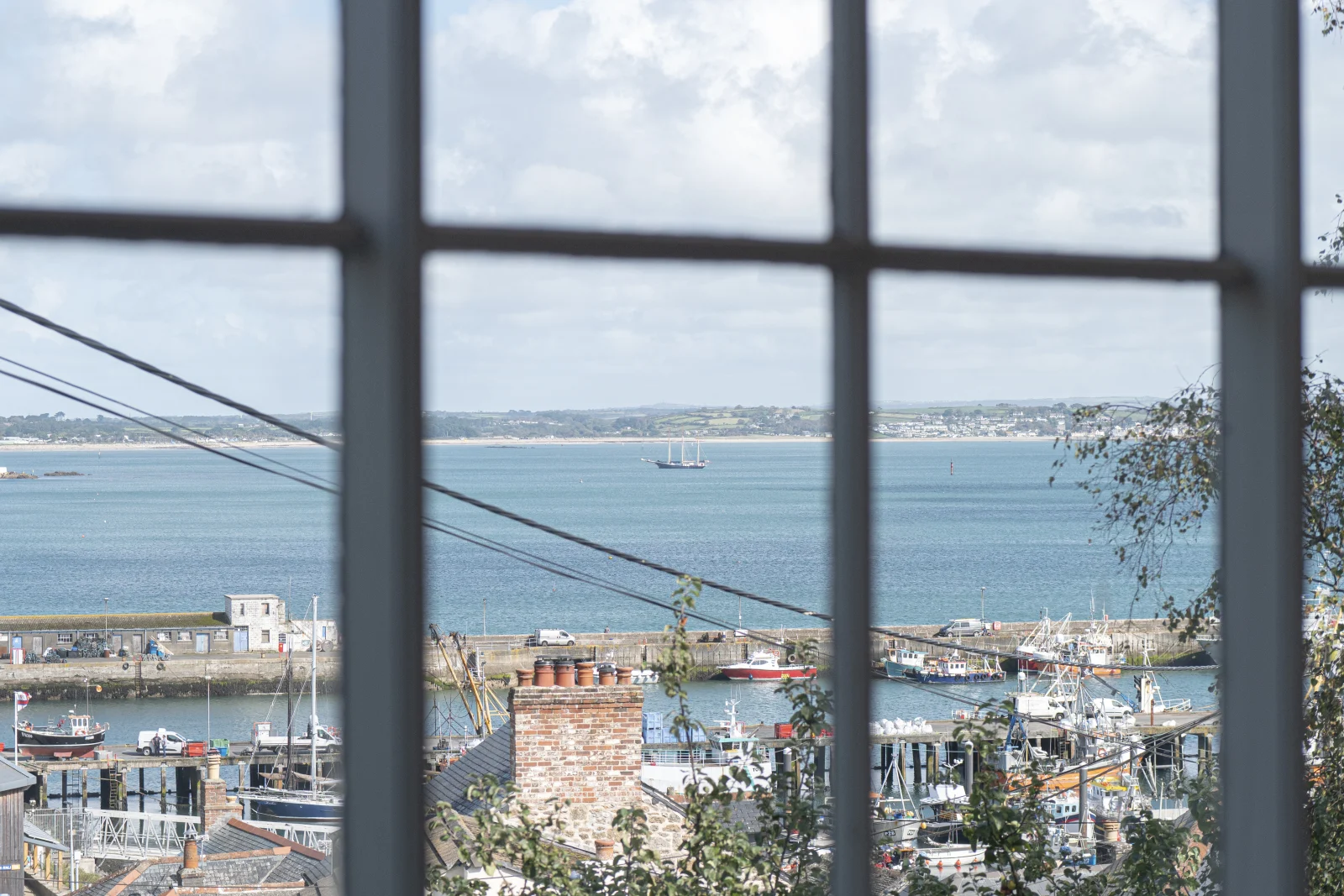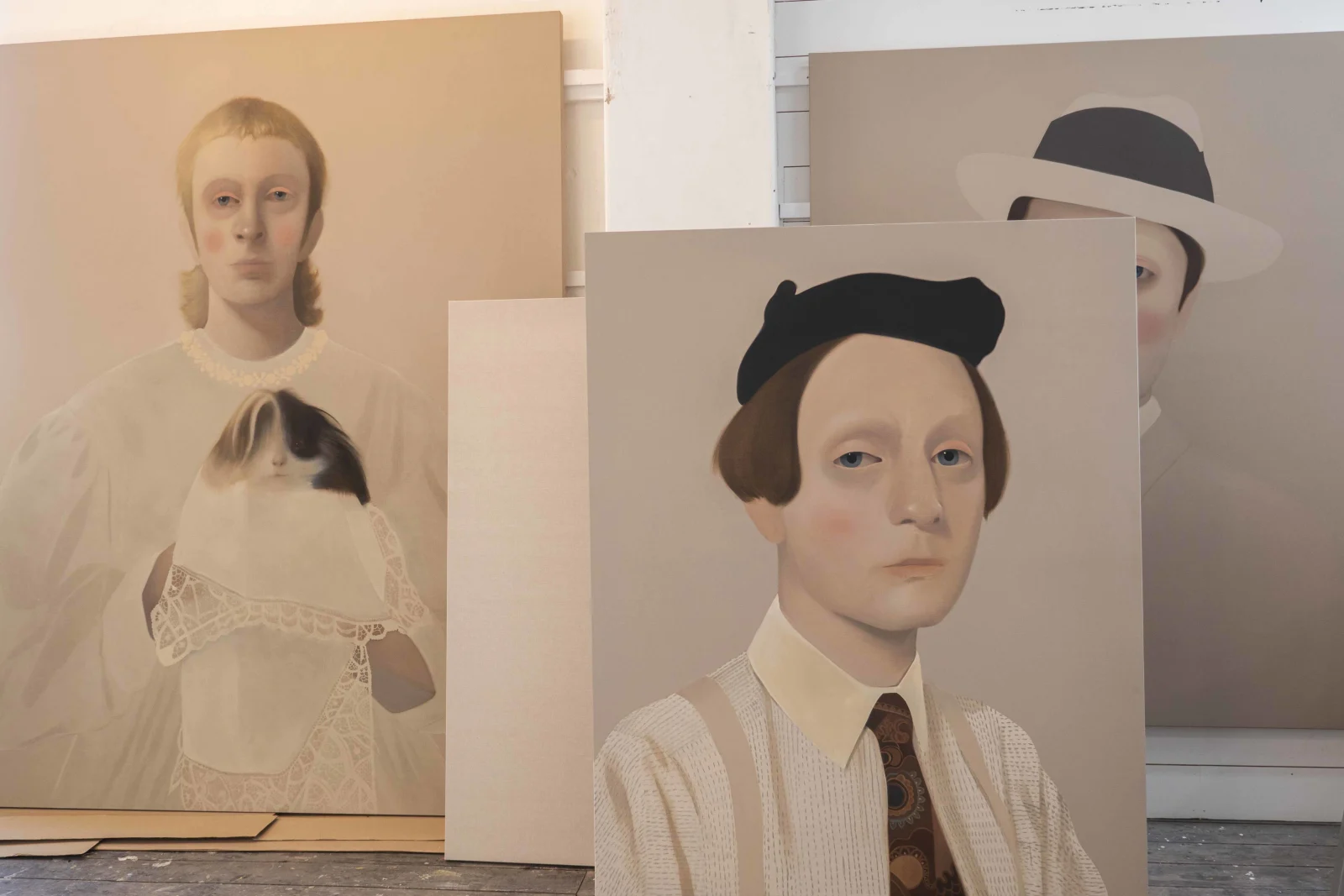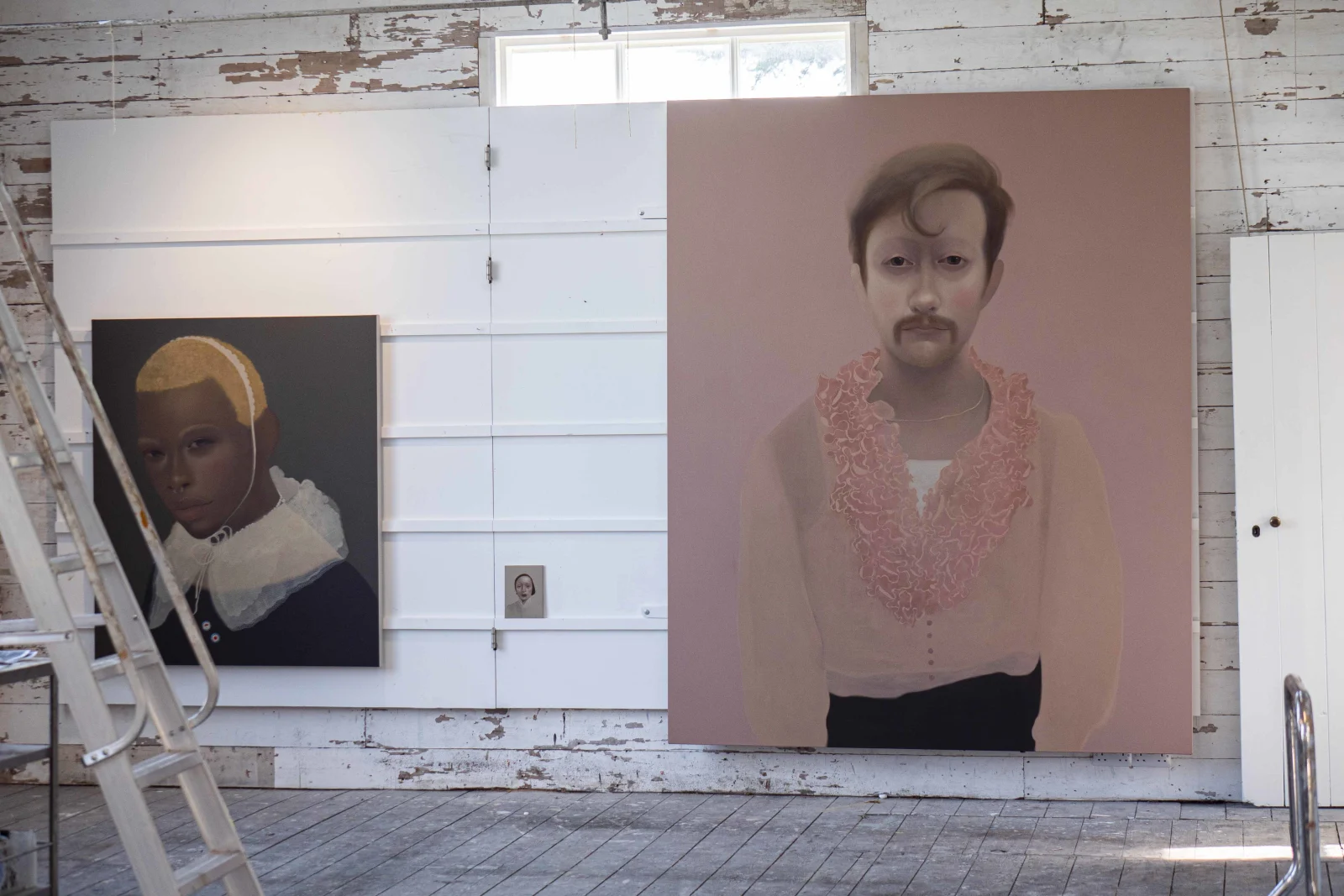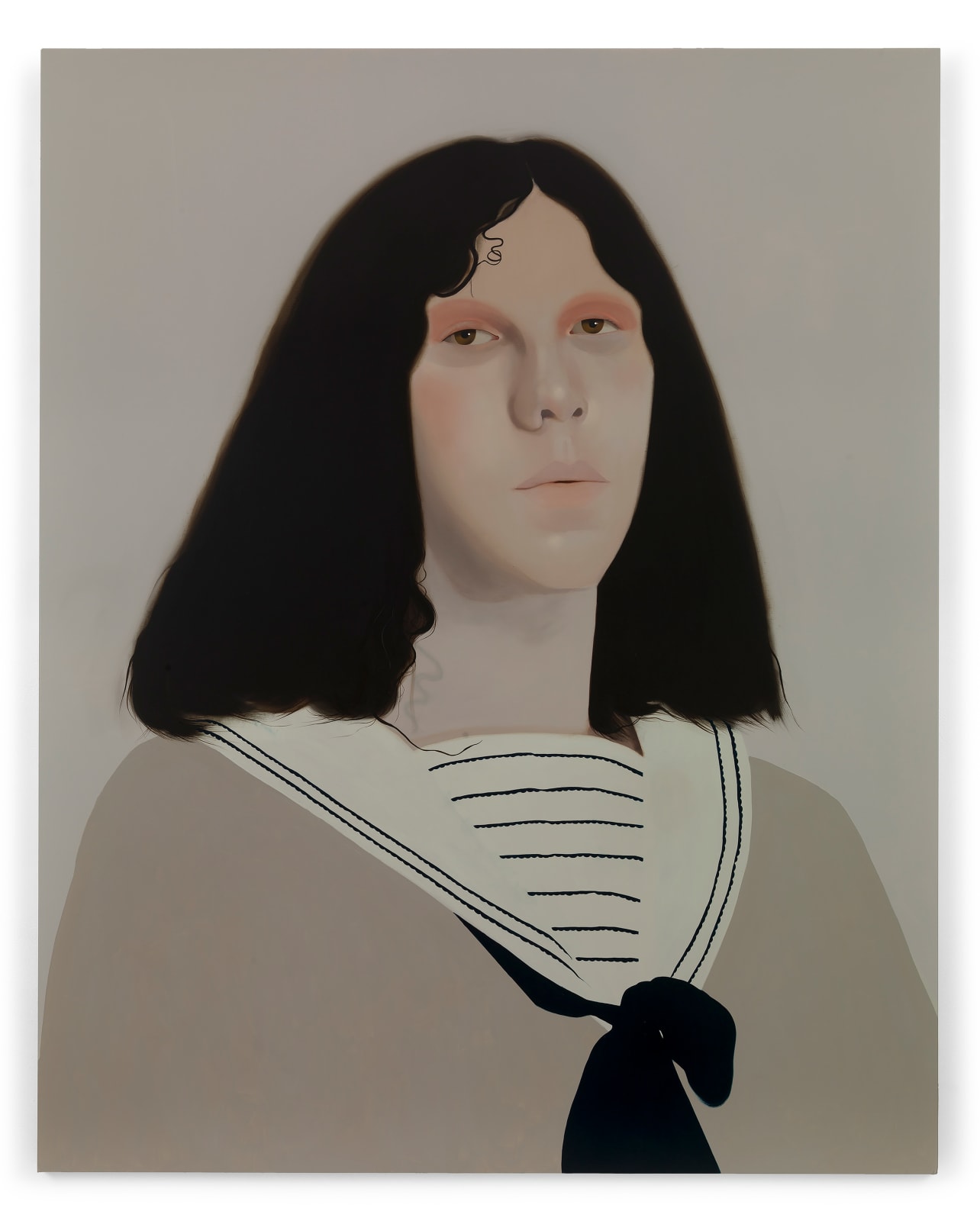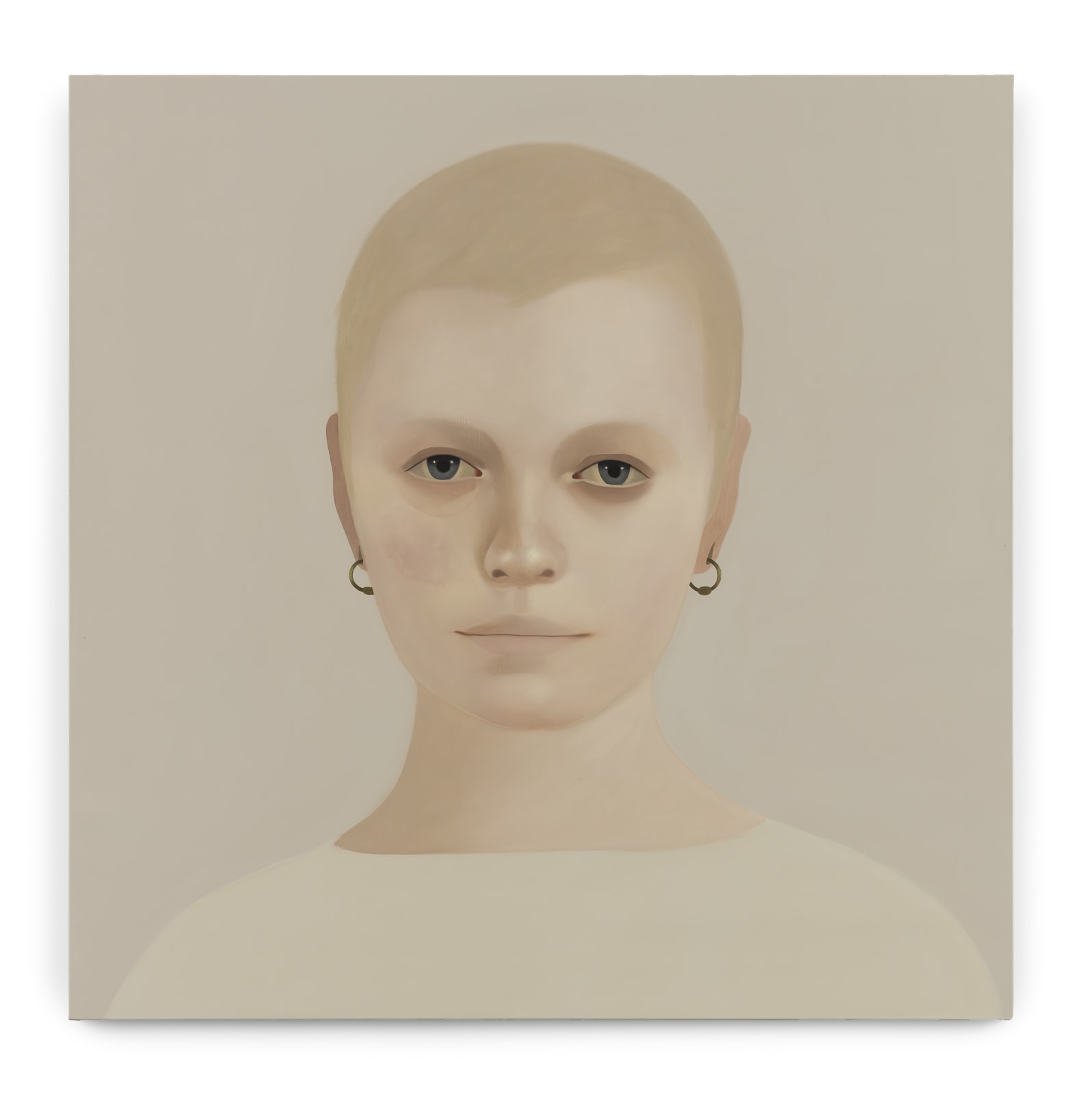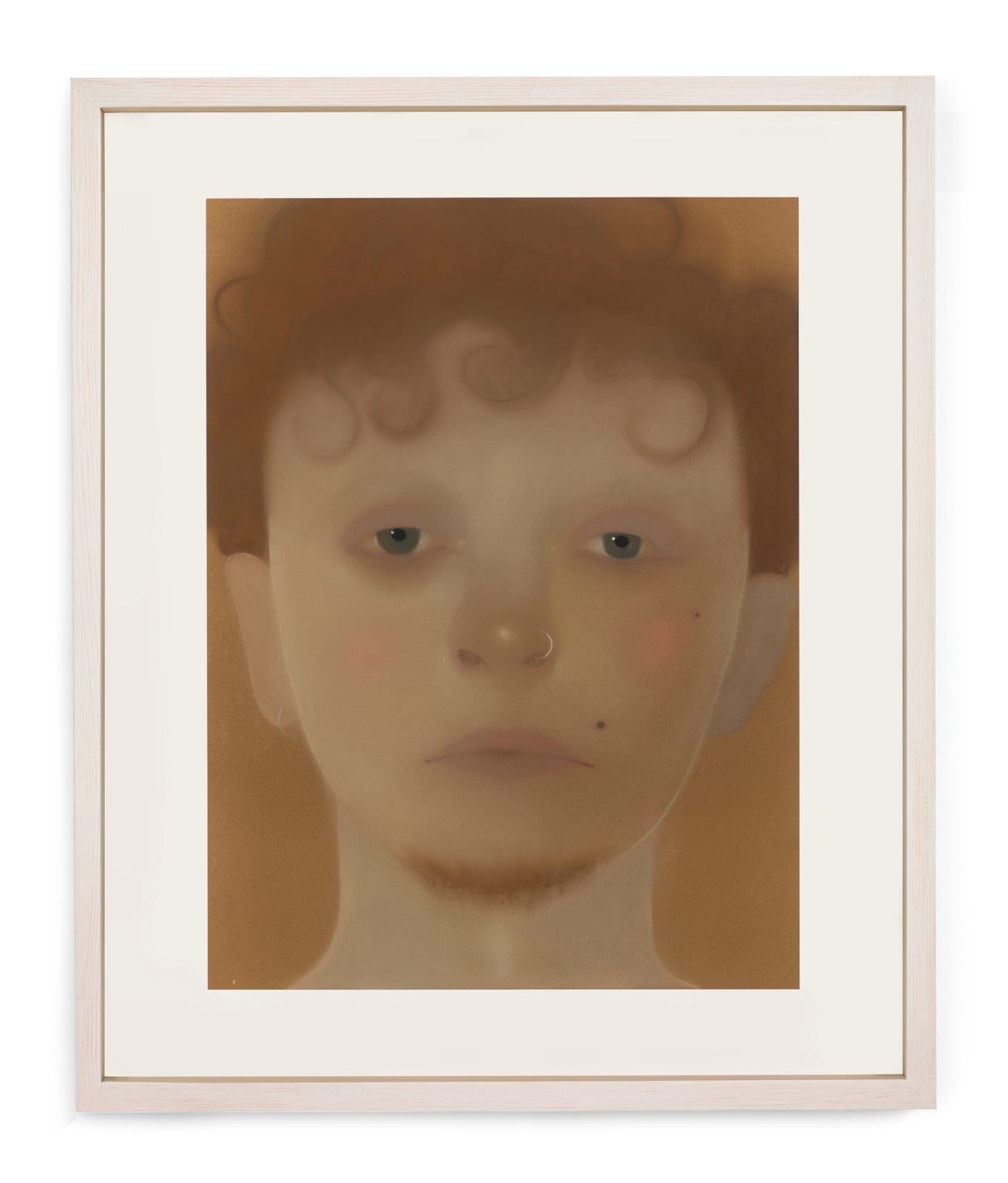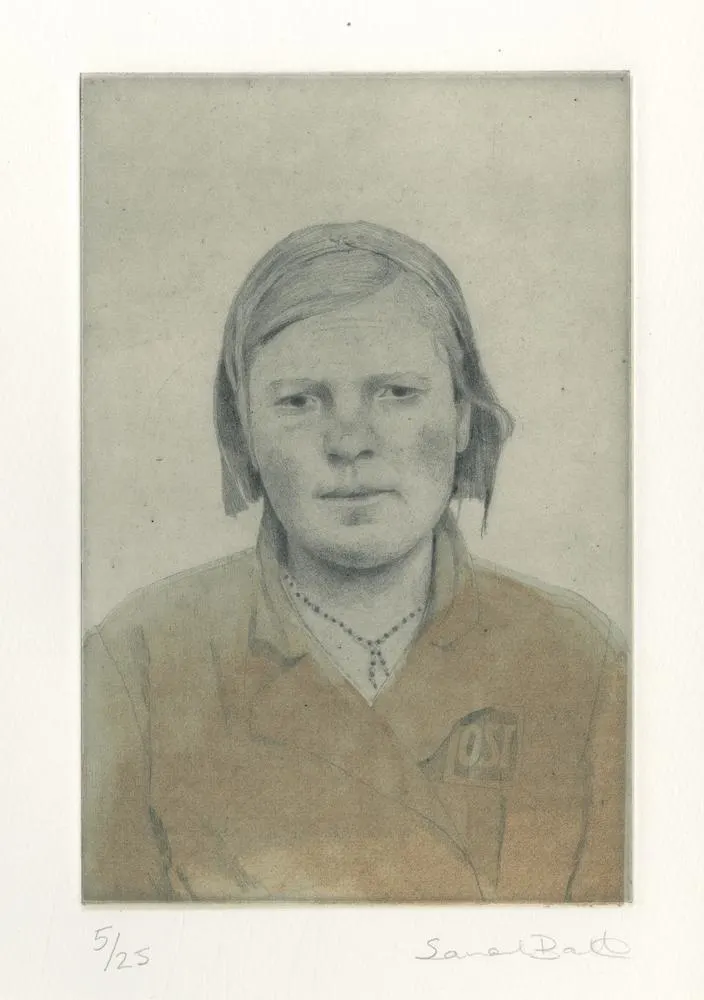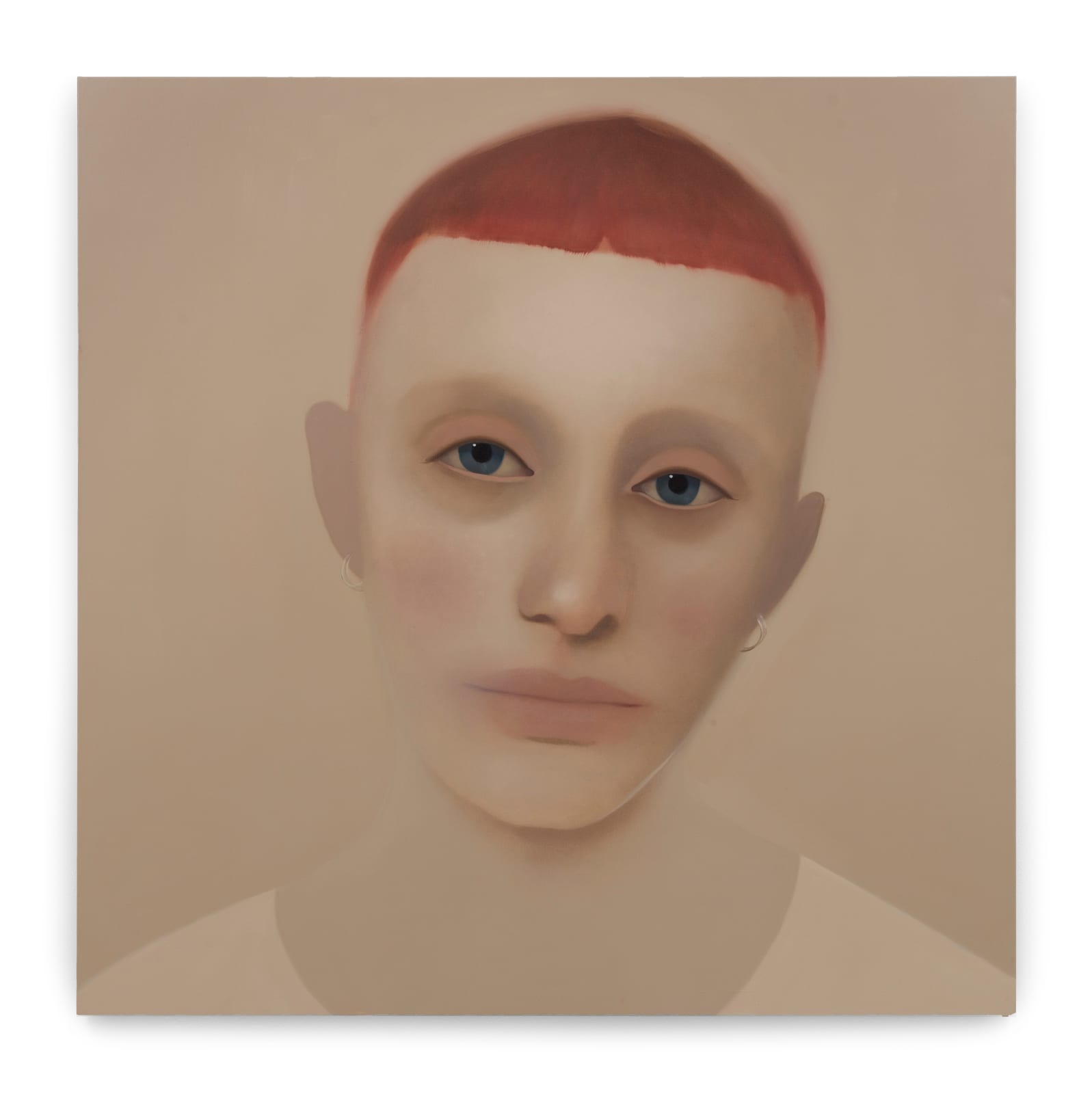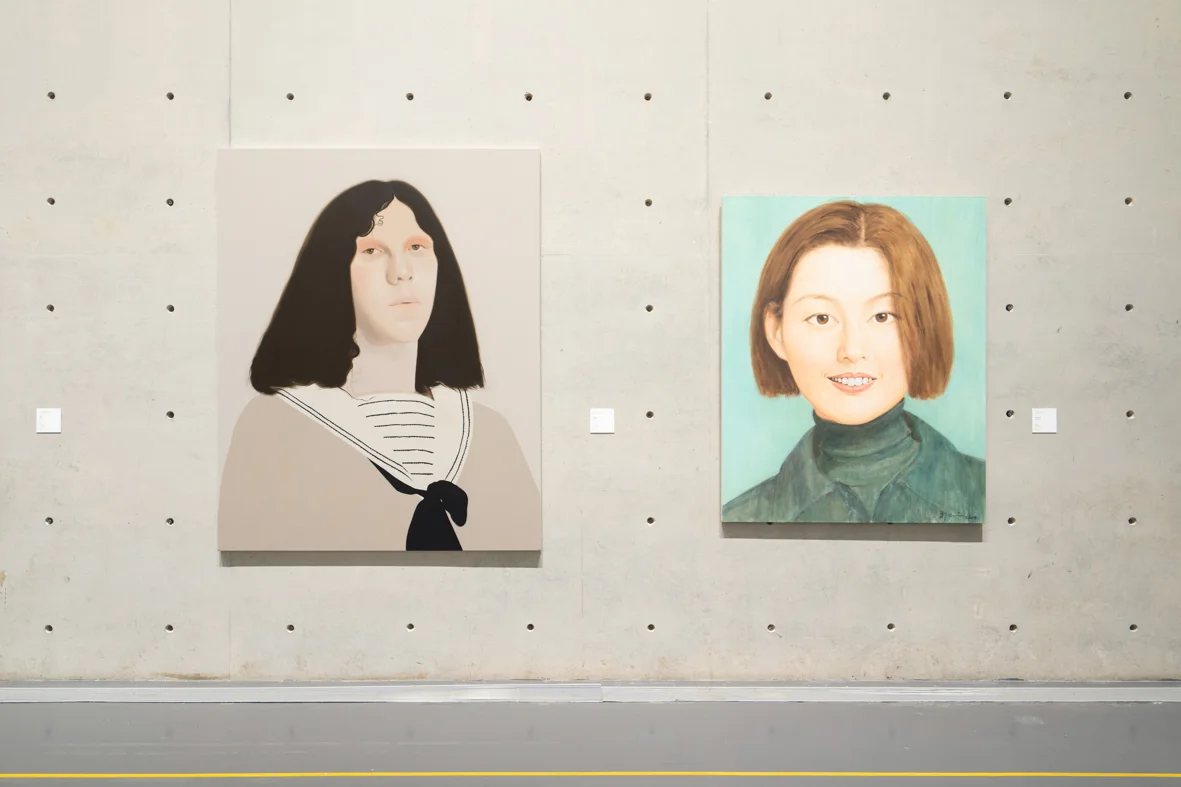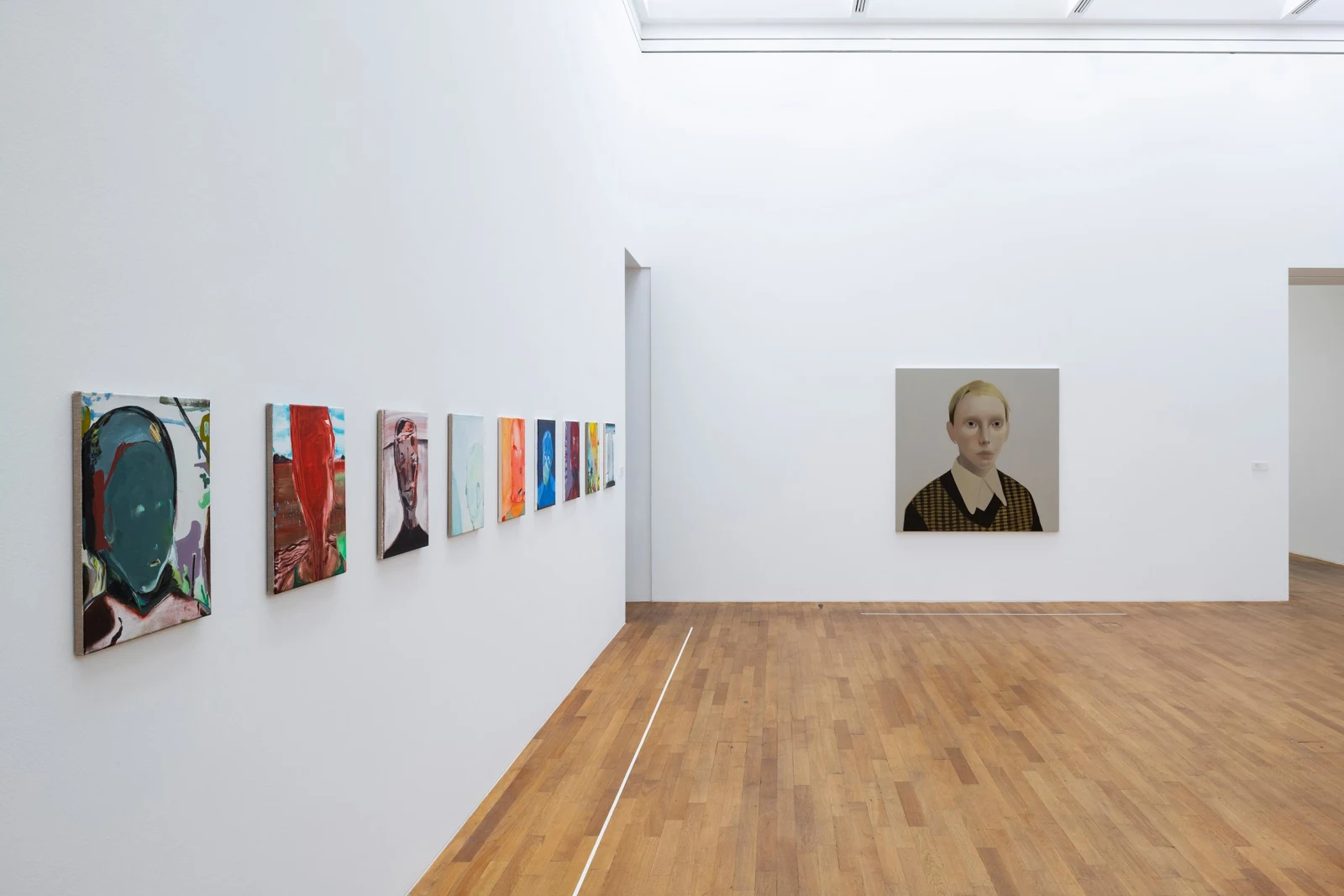Overview
Stephen Friedman Gallery presents Tilted, the first solo exhibition by British artist Sarah Ball in New York. The show comprises a new body of paintings exploring notions of dandyism in the 21st century.
Portraying individuals who embrace self-expression and challenge conventions of gender, Ball spotlights facial features, hairstyles, clothing, jewellery, and makeup that unveil their unique qualities. The artist draws inspiration from diverse sources such as street casting, archival photographs, and social media. Set against flat expanses of colour and confined within tightly framed compositions, Ball imparts a surreal, timeless quality to her subjects by deliberately withholding any narrative about their identity.
Ball's new work is heavily influenced by the figure of the dandy, a concept popularised by poet and playwright Oscar Wilde (1854-1900). For Wilde, the dandy was a man who diligently attended to his appearance, clothing, and lifestyle. Often cultivating an indifferent air, the classic dandy was as much a character as an aesthetic. This ideal found its roots in Beau Brummell (1778-1840), a pioneering figure who fundamentally altered the trajectory of men's fashion by setting a new standard of elegance – abandoning wigs and adopting well-fitted trousers instead of breeches. In recent history, ‘dandy’ has been used to refer either to a fastidious or a flamboyant dresser, typified by groups such as Teddy Boys, Judies, Mods and sapeurs.
Portraying individuals who embrace self-expression and challenge conventions of gender, Ball spotlights facial features, hairstyles, clothing, jewellery, and makeup that unveil their unique qualities. The artist draws inspiration from diverse sources such as street casting, archival photographs, and social media. Set against flat expanses of colour and confined within tightly framed compositions, Ball imparts a surreal, timeless quality to her subjects by deliberately withholding any narrative about their identity.
Ball's new work is heavily influenced by the figure of the dandy, a concept popularised by poet and playwright Oscar Wilde (1854-1900). For Wilde, the dandy was a man who diligently attended to his appearance, clothing, and lifestyle. Often cultivating an indifferent air, the classic dandy was as much a character as an aesthetic. This ideal found its roots in Beau Brummell (1778-1840), a pioneering figure who fundamentally altered the trajectory of men's fashion by setting a new standard of elegance – abandoning wigs and adopting well-fitted trousers instead of breeches. In recent history, ‘dandy’ has been used to refer either to a fastidious or a flamboyant dresser, typified by groups such as Teddy Boys, Judies, Mods and sapeurs.
One of Ball’s subjects, Henry, is depicted in several paintings. Each one embodies this “modern day Dandyism” and showcases the sitter’s sartorial elegance. In one painting Henry dons a beret, a pair of braces, and a vintage Arrow shirt and collar. In another they are depicted wearing bright red lipstick with rouged cheeks. This playful defiance of conventional gender roles connects each work in the show. Declan wears a billowing Simone Rocha gown while holding a long-haired guinea pig. Wrapped ceremoniously in a lace handkerchief, the sitter’s pet is presented to the viewer like a votive offering.
This eccentricity continues in Pink Elliot (2023), whose facial hair is offset by the ostentatious pink ruffles cascading down his shirt. Viewed alongside one another, the variety of Ball’s sitters in the exhibition reveals the breadth of contemporary dandyism.
Stephen Friedman Gallery presents Tilted, the first solo exhibition by British artist Sarah Ball in New York. The show comprises a new body of paintings exploring notions of dandyism in the 21st century.
Sarah Ball - In the Studio
Film by Christopher Morris
“[Dandies] have no other calling but to cultivate the idea of beauty in their persons, to satisfy their passions, to feel and to think.”
- Charles Baudelaire, The Painter of Modern Life (1863)
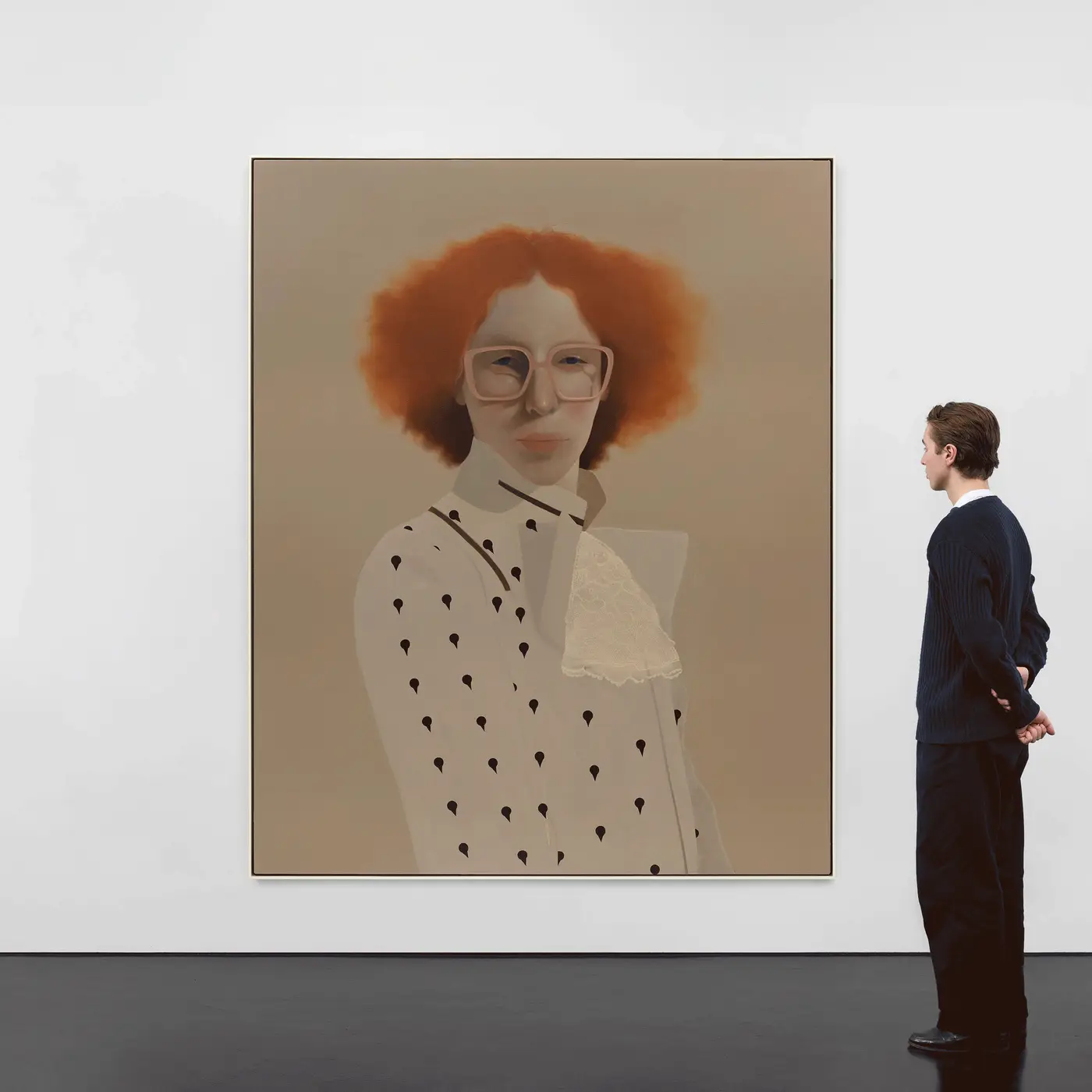
Often depicting people who celebrate self-expression and challenge conventions, Sarah Ball highlights hairstyles, clothes, jewellery and make-up that reveal the idiosyncrasies of her sitters. Foregrounding themes of sexuality and identity, this portrait depicts Elliot, a family friend of the artist’s. The painting’s large scale draws attention to the subject’s gaze, challenging and seducing the viewer in equal measure.
“Through these portraits Ball conjures a different world, one which invites contemplation and sets our imagination free to rewrite each character’s story, over and over again.”
- Flavia Frigeri, Chanel Curator for the Collection at the National Portrait Gallery, London


’Jerome’ depicts a friend of the family. Closely cropped against a monochromatic background, the subject’s adorned collar and ribboned cap frame their direct gaze. The static pose and monochromatic background contribute to a timeless quality, conjuring myriad sources of inspiration – “the stillness of Vermeer, 17th and 18th century Flemish artists, and contemporary painters like Lucian Freud and David Hockney”, writes Ginanne Brownell for The New York Times.

Alys was discovered through street casting. By avoiding fleeting facial expressions or incidental movement, Ball draws attention to the ways in which the subject has chosen to shape their appearance. Whilst details such as Alys’ cropped hair and whimsical shirt hint at personal context, the artist withholds any narrative context about their identity. The portraits “invite you to fill in the rest,” she explains, “they sort of ask a lot of audience”.
“Throughout the history of portraiture, likeness has often been superseded by idolatry, influenced by the politics of the time – with artists required to enhance their subject’s appearance, character, or aspects that spoke of their social standing, […] With Ball withholding so much contextual information about her subjects, it is hard not to project a similar symbolic reading onto her portraits, however futile, leaving us wondering what someone’s choice of necklace or shirt collar may mean about them.”
- Philomena Epps
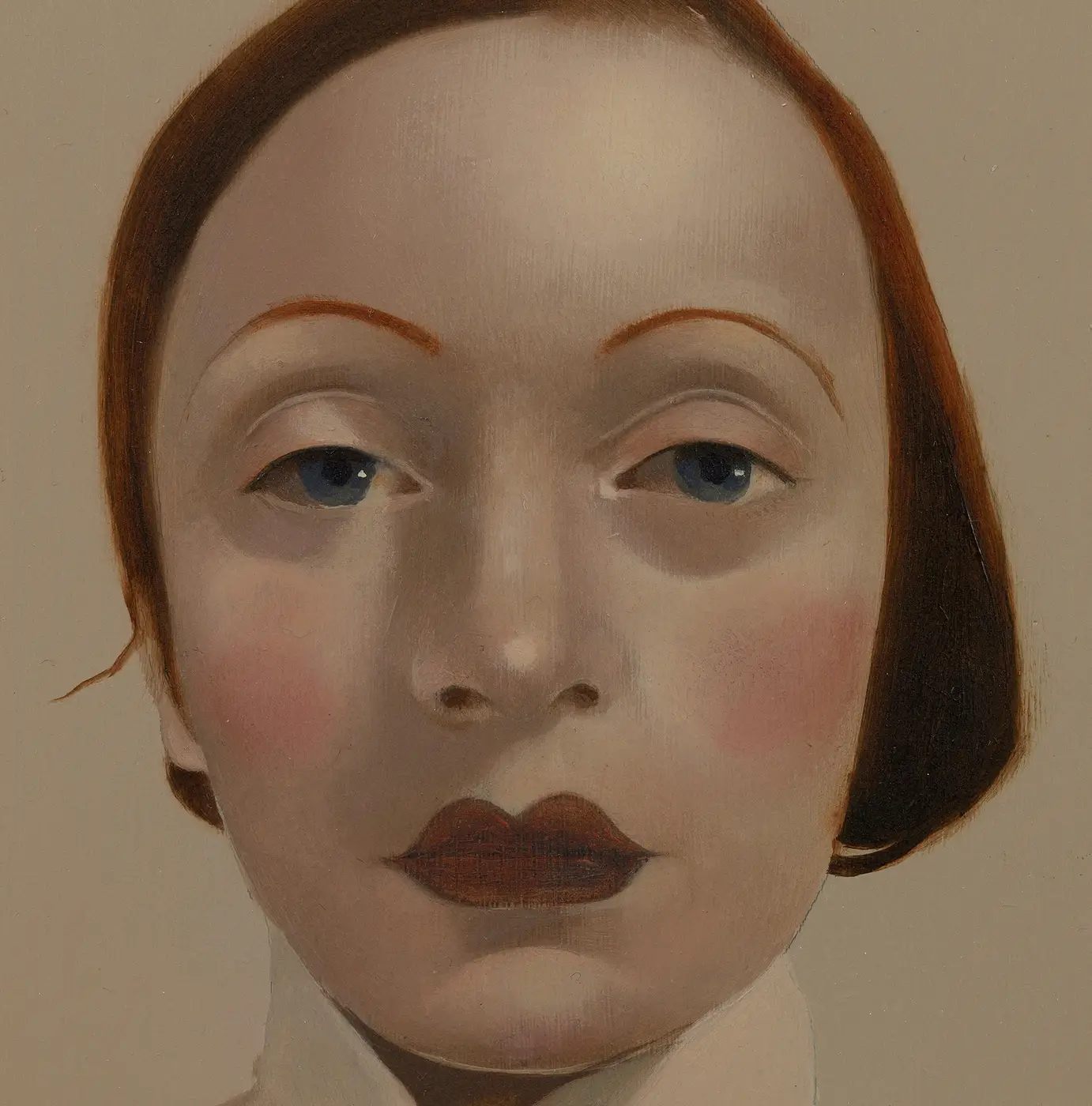
These paintings depict an androgynous figure who Ball discovered on social media. Rather than convey what Ball refers to as a “true and utter likeness”, these paintings captures something of the intrigue that first drew her to the subject. The portraits are “titled with the preferred name the subject uses and that’s the extent of the personal story that is revealed or told through the work”, Ball explains. This approach results in a sense of timelessness that speaks to the various influences on her practice, including Dutch portraiture and contemporary film.
Flavia Frigeri describes “the articulateness of the gaze [in Ball’s recent portraits, which] insinuates a fertility of expression, distinct from the signifiers which conventionally objectify the personality of a portrayed subject. In other words, she sets up the scene for a revelatory encounter, mediated by herself, and performed by the subject and the viewer.”
“The formal stillness of Ball’s portraits brings to mind the work of Renaissance painters, artists like Domenico Ghirlandaio or Sofonisba Anguissola, Johannes Vermeer and figures associated with the Flemish Baroque. “I’m inspired by sixteenth- and seventeenth-century painting, in addition to the unknown allegorical painters of the British school,” Ball has noted.”
- Philomena Epps, Writer

Discussing the new body of paintings, Ball explains that there isn’t a fixed description of dandyism – “the idea is a fluid one and it can change in respect to the social, political and cultural climate of the time. Certain attributes though seem to be a given – theatricality, creativity, style, flamboyance, individuality, and a certain degree of (non-gendered) camp.” Showcasing the subject’s unique style, Declan’s portrait embodies this evolving aesthetic.
These portraits depict an androgynous figure, titled with the non-binary German name ‘Von’. While these physical characteristics hint at personal context, Ball denies the viewer any narrative about their identity. This results in a sense of timelessness that speaks to the many influences on her practice.
Demonstrating an acute sensitivity to the psyche of her subjects, Sarah Ball’s enigmatic portraits explore the way we project images of ourselves to the world. Ball discovered Von on social media and yet their lace headband, puffed sleeves, and static three-quarter pose evoke Renaissance and Netherlandish portraiture. The dark, monochromatic background contributes to the painting’s surreal quality.

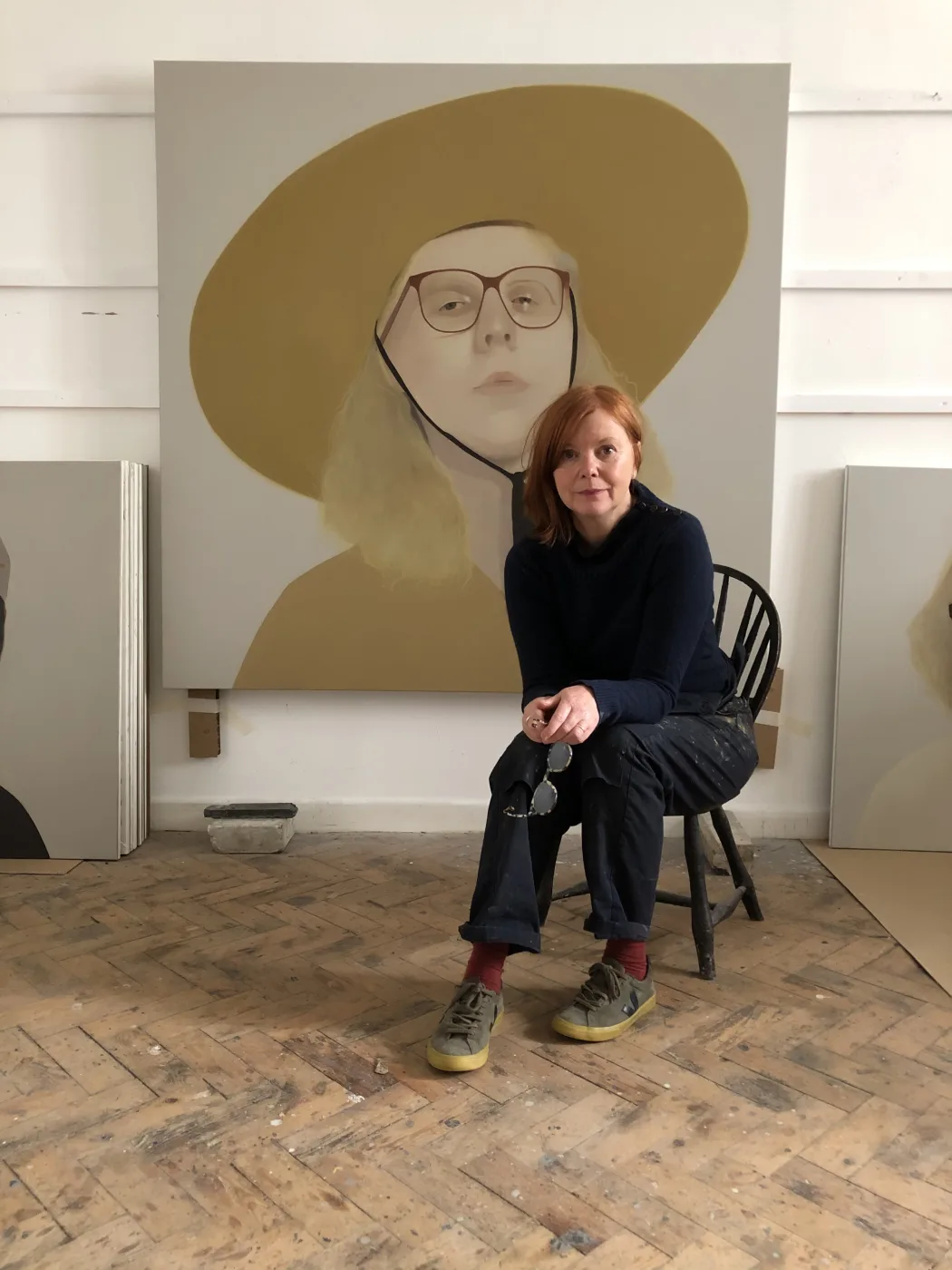
Artist Biography
Sarah Ball was born in Yorkshire, UK in 1965. She currently lives and works in Cornwall, UK. Ball studied at Newport Art College in the early 1980s and completed an MFA at Bath Spa University in 2005.
Ball’s works are included in the permanent collections of The British Museum, London, UK; Grace Museum, Abilene, Texas, USA; The Hepworth Wakefield, UK; Kistefos Museum, Jevnaker, Norway; Kunstmuseum Bonn, Germany; Long Museum, Shanghai, China; Pond Society, Shanghai, China; Rachofsky Collection, Dallas, Texas, USA; University of Glamorgan, Pontypridd, Wales and Xiao Museum of Contemporary Art, Rizhao City, China.
In 2025, a major solo exhibition by Ball will open at Longlati Foundation, Shanghai.







